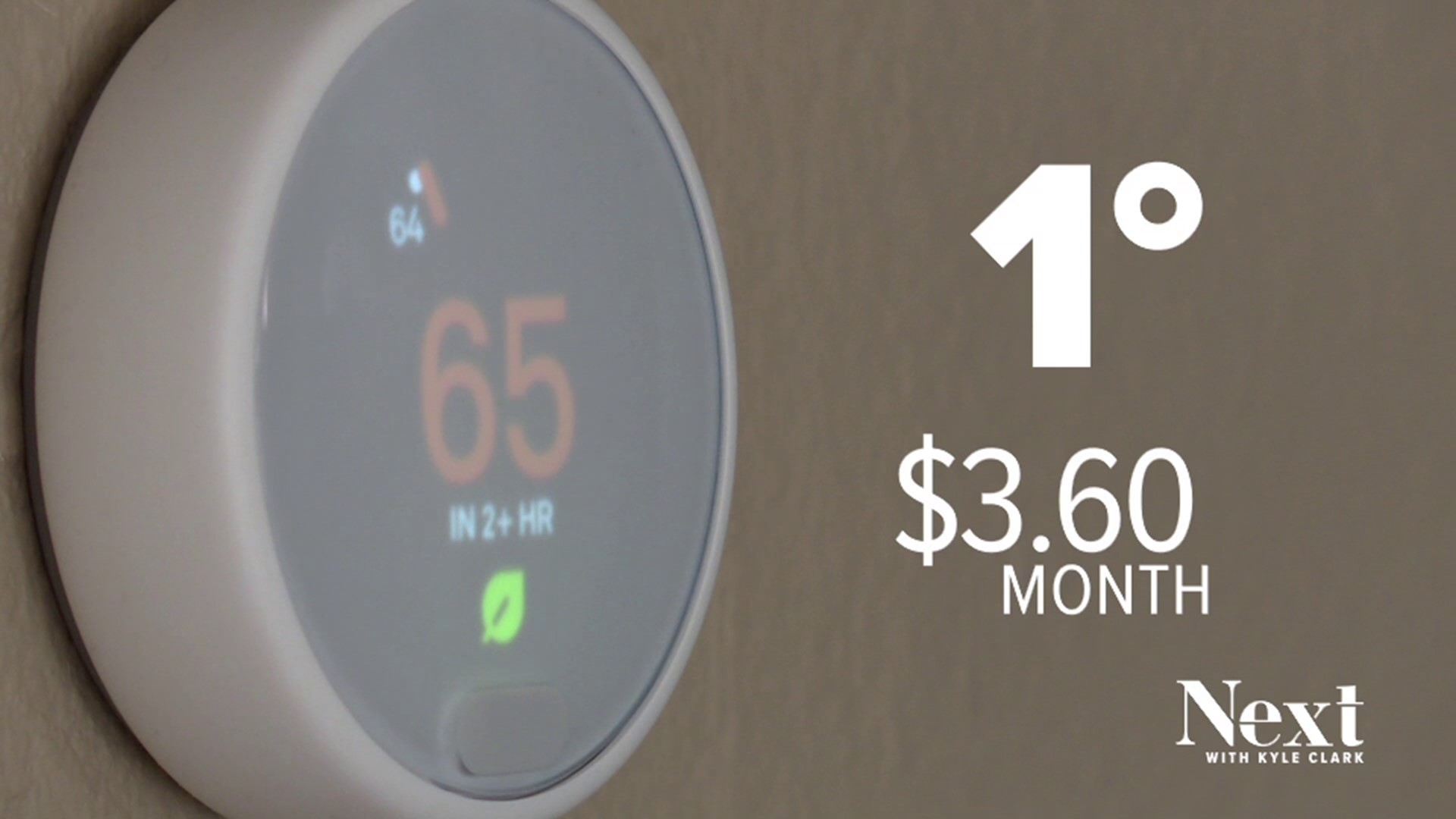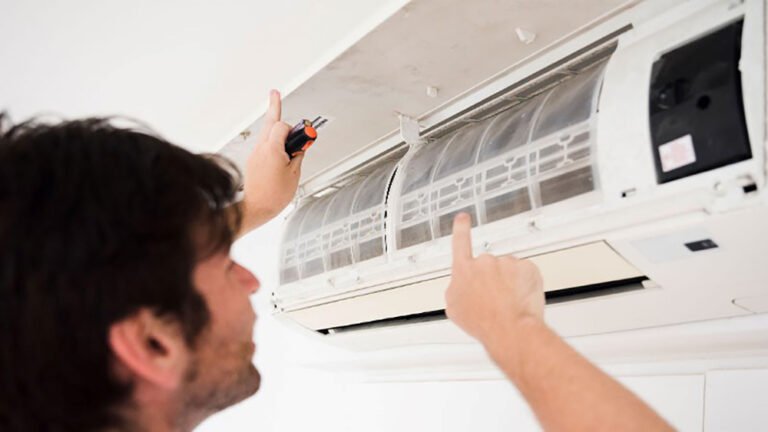Why Does My Google Nest Keep Changing Temperature? Find Solutions Now
The reason your Google Nest keeps changing temperature is most likely due to an outdated or faulty thermostat that needs to be replaced. Checking for default programming, energy-saving programs, and old batteries can help troubleshoot the issue, but if the problem persists, it’s recommended to contact a professional as there may be an issue with old wires or software.
Locking the temperature settings on your Google Nest thermostat can also help prevent it from changing on its own. However, if the thermostat continues to have problems, such as the Nest button not clicking or the system rebooting repeatedly, it may be due to bulky wires in the back causing interference.
Troubleshooting and adjusting the schedule of the Nest Temperature Sensor can also help ensure accurate readings.
Reasons For Temperature Changes
| Reasons for Temperature Changes |
| Outdated or Faulty Thermostat |
| Default Programming |
| Energy-saving Programs |
| Old Batteries |
| External Temperature Changes |
| Unintentional Manual Adjustments |
| Interference from Other Devices |
| Sensor Placement Issues |
If you are experiencing temperature changes with your Google Nest, there could be several reasons for this. One possible reason is an outdated or faulty thermostat. This could be caused by old wires or software issues, which may require professional assistance to resolve. Another reason could be the default programming of your Nest, which may need to be adjusted to better suit your preferences. Energy-saving programs could also be affecting the temperature changes, as well as old batteries in your Nest device. Additionally, external temperature changes or unintentional manual adjustments could be contributing to the fluctuation in temperature. Lastly, interference from other devices or improper sensor placement can also lead to temperature changes. It is important to address these issues to maintain a comfortable home temperature.

Credit: www.9news.com
Solutions To Fix Temperature Changes
| Solutions to Fix Temperature Changes | |
| Contact a Professional for Inspection and Repair | |
| If you have tried all the basic troubleshooting steps such as checking default programming, energy-saving programs, old batteries, and ensuring no one has been changing the temperature in your home, it may be time to contact a professional for inspection and repair. There could be an issue with outdated or faulty thermostat software or old wires that need to be replaced. Professional HVAC technicians have the expertise to diagnose and fix these issues, ensuring your Nest thermostat functions properly. | |
| Update the Thermostat Software | |
| Keeping your Nest thermostat software up to date is crucial to prevent temperature changes and ensure optimal performance. Regularly check for updates and install them to fix any bugs or issues that may be causing the temperature fluctuations. | |
| Replace Old Wires or Thermostat | |
| If your Nest thermostat is connected to old or faulty wires, it can result in temperature changes. Consider replacing the wires or even the thermostat itself to eliminate this potential cause. | |
| Reset and Reconfigure the Thermostat | |
| Resetting your Nest thermostat to factory settings and reconfiguring it can often resolve temperature inconsistencies. Follow the manufacturer’s instructions to perform a reset and set up your thermostat again. | |
| Lock the Temperature Settings | |
| If you don’t want the temperature settings to be changed, you can lock them to prevent unwanted adjustments. This can be done through the Nest thermostat settings menu or through the Nest app on your smartphone. | |
| Adjust the Sensor Schedule | |
| The time of day can affect the accuracy of the sensor readings. Adjust the schedule of your sensor, especially if it is located in a room with large windows or extreme temperature variations, to ensure accurate temperature reporting. | |
| Optimize Sensor Placement | |
| Ensure that your Nest thermostat sensor is placed in an optimal location. Avoid placing it near drafty areas or sources of heat or cold that may affect the temperature readings. Experiment with different placements to find the most accurate and consistent readings. | |
| Check for Interference Sources | |
| Interference from other devices, such as electronics or appliances, can impact the performance of your Nest thermostat. Make sure there are no sources of interference near your thermostat that could cause temperature fluctuations. | |
Preventing Future Temperature Changes
The temperature fluctuations in your Google Nest can be frustrating, but there are several steps you can take to prevent future changes:
- Regularly Update Thermostat Firmware: Keeping your thermostat firmware up to date ensures that you have the latest bug fixes and improvements.
- Set a Schedule and Stick to It: Creating a schedule for your thermostat will help maintain consistency in temperature settings.
- Use Geolocation Feature for Auto-adjustments: Enabling the geolocation feature allows your thermostat to automatically adjust the temperature based on your location.
- Consider Using Temperature Sensors: Utilizing temperature sensors in different rooms can help provide more accurate temperature readings and prevent unnecessary adjustments.
- Keep the Thermostat Area Free from Obstructions: Make sure there are no objects blocking the thermostat’s sensors to avoid false readings.
- Ensure Proper Insulation and Weatherstripping: Ensuring your home is properly insulated and sealed with weatherstripping can help maintain a consistent temperature.
Common Issues With Nest Thermostats
| Common Issues with Nest Thermostats |
| Nest Button Not Clicking If you’re facing a problem with your Nest thermostat where the button is not clicking, it can be quite frustrating. This issue often occurs during the initial setup when the system keeps rebooting repeatedly. The cause of this problem is usually the wiring in the back. The wires can be bulky and obstruct the button, preventing it from clicking properly. |
| Continuous Reboot during Setup Another common issue that many Nest thermostat users face is continuous rebooting during the setup process. This can be extremely frustrating and can prevent you from completing the setup and getting your thermostat to work properly. It is advisable to check the wiring in the back and ensure that all the connections are secure. If the problem persists, contacting a professional may be necessary to resolve the issue. |
| Wiring Issues in the Back Wiring issues in the back of the Nest thermostat can cause various problems, including the thermostat changing temperature on its own. It is important to check the wiring and ensure that all the connections are secure and properly installed. If there are any loose or faulty wires, it can affect the functioning of the thermostat and result in inaccurate temperature readings. |
| Trouble with Nest Temperature Sensors Some users may experience trouble with Nest temperature sensors, where the sensor shows the wrong temperature. This can happen due to various factors, such as the location of the sensor and the time of day. If the sensor is placed in a room with many windows, it may report higher temperatures compared to the rest of the house. To troubleshoot this issue, you can try adjusting the sensor’s schedule or seek assistance from Google help. |
| Inaccurate Temperature Readings One of the common issues with Nest thermostats is inaccurate temperature readings. This can happen due to various reasons, such as faulty sensors, incorrect placement of the thermostat, or outdated software. It is important to ensure that the thermostat is installed correctly and the sensors are functioning properly. If the problem persists, contacting a professional technician may be necessary to diagnose and fix the issue. |
Additional Tips And Troubleshooting
Additional Tips and Troubleshooting:
If you’re experiencing an issue with your Google Nest thermostat constantly changing temperature, here are some additional tips and troubleshooting steps you can take:
- Check Wiring Connections: Ensure that all the wiring connections are secure and properly connected. Loose or faulty wiring may cause temperature fluctuations.
- Verify Compatibility with HVAC System: Make sure that your Google Nest thermostat is compatible with your HVAC system. Incompatible systems can lead to temperature inconsistencies.
- Perform a Factory Reset: To reset your Google Nest thermostat, go to settings and select “Reset.” This can help resolve any software glitches that may be causing temperature changes.
- Seek Help from Nest Support Community: Engage with the Nest support community for troubleshooting advice and solutions. They can provide valuable insights and assistance.
- Consider Professional HVAC Inspection: If the issue persists, it may be beneficial to consult with a professional HVAC technician. They can identify any underlying problems with your heating and cooling system.
By following these tips and troubleshooting steps, you can address the issue of your Google Nest thermostat constantly changing temperature.
Frequently Asked Questions Of Why Does My Google Nest Keep Changing Temperature
Why Is My Thermostat Changing Temperature On Its Own?
If your thermostat is changing temperature on its own, it could be due to an outdated or faulty thermostat. Check for default programming, energy-saving programs, and old batteries. If the issue persists, it may be time to contact a professional as there could be a problem with old wires or software.
How Do I Lock The Temperature On Google Nest?
To lock the temperature on your Google Nest Thermostat, follow these steps: 1. Go to the Nest app on your phone or tablet. 2. Select your thermostat. 3. Tap on the Settings icon. 4. Scroll down and choose “Lock” under Temperature.
5. Set the desired temperature range and enter a PIN. 6. Save your changes. Now, the temperature settings on your Google Nest Thermostat will be locked.
What Is A Common Problem With Nest Thermostats?
A common problem with Nest thermostats is that they can change temperature on their own. This can be caused by outdated or faulty thermostats, default programming, energy-saving programs, old batteries, or even someone manually changing the temperature. If all troubleshooting steps have been attempted, it may be necessary to contact a professional to address any issues with old wires or software.
Why Is My Nest Sensor Showing The Wrong Temperature?
If your Nest sensor is showing the wrong temperature, it could be due to the sensor’s schedule or its location. Adjust the schedule or move the sensor to a different area for accurate temperature readings. Alternatively, check if any Home and Away routines or Eco Temperature settings are interfering with the sensor.
Why Does My Google Nest Thermostat Keep Changing Temperature?
The temperature changes on your Google Nest thermostat can be caused by several factors. It could be due to outdated or faulty thermostat hardware, default programming, energy-saving programs, or even someone manually changing the temperature. If you have ruled out these possibilities and the issue persists, it may be time to contact a professional for further assistance.
How Do I Lock The Temperature On My Google Nest Thermostat?
To lock the temperature settings on your Google Nest thermostat, you can follow these steps:
1. Open the Nest app on your phone or tablet. 2. Tap on the thermostat that you want to lock. 3. Tap on the Settings icon. 4. Scroll down and select “Lock.” 5. Enter a PIN code to set the lock. Once the temperature settings are locked, only users with the PIN code can make changes.
What Are Some Common Problems With Nest Thermostats?
Some common problems with Nest thermostats include the Nest button not clicking, the system rebooting continuously during setup, and bulky wires causing obstruction at the back of the thermostat. If you are experiencing any of these issues, it is recommended to troubleshoot the problem or seek professional help.
Why Is My Nest Sensor Showing The Wrong Temperature?
If your Nest sensor is showing the wrong temperature, it could be due to the time of day affecting its readings. For instance, if the sensor is placed in a bedroom with large windows in a warm climate area, it may report higher temperatures than the rest of your house.
Troubleshooting the issue and adjusting the sensor’s schedule can help resolve this problem.
Conclusion
If you’re experiencing the frustration of your Google Nest thermostat constantly changing temperature on its own, there could be a few potential causes. It could be due to an outdated or faulty thermostat, default programming, energy-saving programs, old batteries, or even someone manually adjusting the temperature settings.
If you’ve checked all these factors and the issue persists, it may be wise to contact a professional for further assistance.







